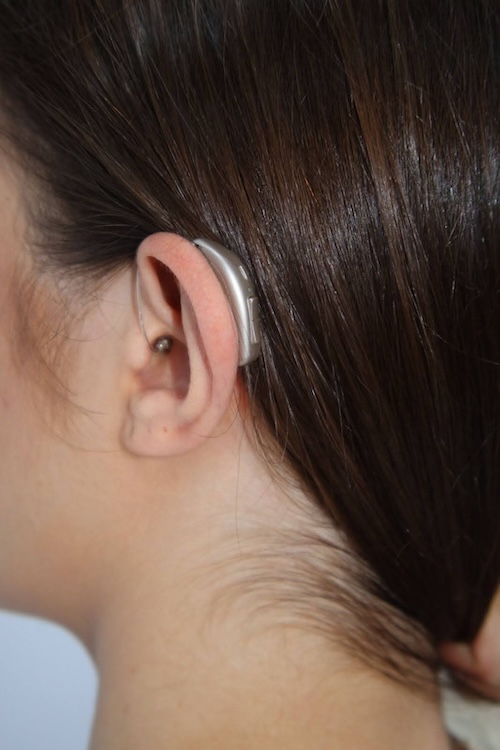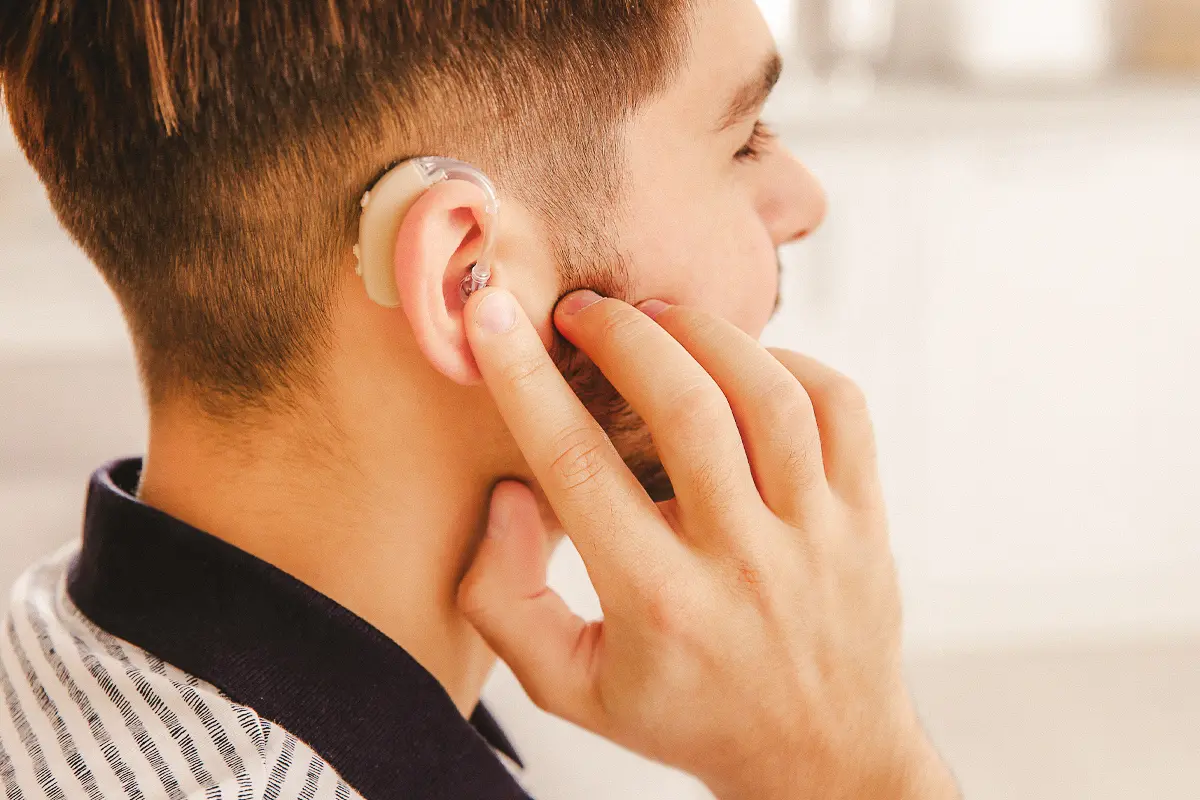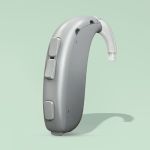Table of Contents
- Our Handbook Team hand-tested 27 hearing aids, mystery-shopped 12 brands, and gathered insights from hearing professionals.
- We also conducted multiple surveys and focus groups of hearing aid users to determine what is most important to our audience.
- When testing Oticon models, we used a 25-point questionnaire, taking notes on comfort, ease of use, sound quality, customer service, and follow-up care.
- Learn more about how we tested Oticon hearing aids.
Key takeaways
- We recommend Oticon prescription hearing aids for those seeking various style options, convenient features, and state-of-the-art sound technologies.
- The Oticon hearing aids in this review typically cost $1,925–$5,945, but pricing depends on your hearing aid provider and the customizations needed. Talk to your health insurance provider to see if Oticon hearing aids are fully or partially covered under your specific policy.
- Oticon hearing aids contain advanced technology and are designed for people with mild to profound hearing loss.
If you’ve experienced hearing loss, you’re not alone. Roughly 15.4 percent of people (or 50 million) in the U.S. age 18 and older report difficulty hearing. One of the biggest drawbacks of hearing loss is that it can make life less enjoyable and has a significant impact on your overall health. Difficulty hearing may also lead to social isolation and loneliness, depression, and cognitive impairment.
People are often hesitant to seek out solutions for hearing loss due to the stigma associated with wearing a visible device. But some of the best hearing aids produced by brands like Oticon offer a variety of discreet in-the-ear hearing aids that offer the benefits of improved hearing quality.
According to a hearing aid survey the Handbook Team conducted of 600 adults age 18–44, nearly 61 percent of respondents say hearing aids significantly improved their quality of life or the quality of life of the person they purchased the devices for.
If you’re shopping for prescription hearing aids, Oticon is one brand to consider. Our Oticon hearing aids review explores options that offer various sound technologies, features like Bluetooth connectivity and call streaming, and the ability to sync up with other accessories. Our Handbook Team uses firsthand testing insights for the Oticon Real while highlighting three additional models currently in our testing queue.
Oticon Real
Our experience with Oticon Real
The Oticon Real is a prescription hearing aid line that offers several advanced sound technologies to provide a smooth hearing solution. We appreciate that the Real line comes in four styles and a variety of colors. All four options also have telecoil A small copper wire in your hearing aid serves as a receiver, allowing you to connect to audio through a loop system often found in public facilities, including places of worship and public transportation. technology and tinnitus Tinnitus is when a person hears ringing, buzzing, or other noises in the ear. It is often associated with hearing loss. support. Depending on your preference, you can choose from rechargeable or disposable battery-operated hearing aids.
Who may like Oticon Real: People with mild to severe hearing loss looking for technologically advanced hearing aids that prioritize high-quality, real-life sounds.
Who may want to avoid Oticon Real: Those looking for something simpler or people on a budget.

Insights from our Oticon Real testers
The Oticon Real is available in four different styles: miniRITE R (rechargeable batteries), mini RITE T (disposable 312 batteries), miniBTE R (rechargeable batteries), and miniBTE T (disposable 312 batteries). The RITE style is a receiver-in-canal (RIC) option branded as RITE by Oticon.
Oticon Real hearing aids come in eight colors (except the miniRITE R, which has olive green as a ninth option) and three performance levels. There are several impressive sound technology features integrated into Oticon Real aids:
- BrainHearing is designed to work with the brain to naturally isolate sounds you want to hear and reduce disruptive noises. It also improves speech clarity and reduces your listening effort.
- RealSound technology features a wind and handling stabilizer designed to keep noises caused by wind or touching the device from bothering you while allowing you to hear speech better when it’s windy.
- The Deep Neural Network (DNN) feature trains the hearing aids with 12 million real-life sounds to recognize each sound and organize it by its sound environment. The hearing aids learn through trial and error, much like our brains do.
Oticon Real hearing aids connect to Bluetooth and offer hands-free calling through select Apple and Android devices. Although our testers haven’t had difficulty setting up the hearing aids, they say the user guide could be more user-friendly, lacking step-by-step instructions and helpful pictures. While wearing the hearing aids, they say the sound quality is great, and the fit is snug and intuitive. Even before customizing the hearing aids to the user, they say the sound is smooth and clear.
We also appreciate the Oticon Companion App’s capabilities, especially how precisely the Find My Hearing Aids feature tracks our movements in real-time. The app connected fairly easily to the hearing aids, although we’ve learned that turning off Bluetooth on other devices can make connecting easier by reducing interference. Our testers also like the Remote Microphone, which works through the app and lets you put your phone near someone speaking to hear speech directly to your hearing aid. “I could hear clearly from across the office what people were saying when speaking near my phone,” one tester says. You can also customize the app to send you low-battery notifications at the level that works for you (for example: 20 percent or 30 percent).
Within the Real line, the “T” models require disposable batteries, while the “R” models have rechargeable batteries, which last a full day and come with a convenient wireless charger case. An orange light on the case signals when charging and turns green when the process is complete. Our tester likes the low-battery signals (beeps and lights). A desktop charger will also charge your hearing aids while you are asleep so you can wake up to a fully charged set.
Oticon offers connectivity accessories to further customize your experience. You can use the ConnectClip if you want a remote microphone that’s not your phone, the TV Adapter to stream TV audio to your devices, a Remote Control to make adjustments, and the EduMic as another remote microphone option to stream audio from other devices, like computers or tablets.
From our tester
“The sound quality is not harsh like OTCs, and this is just right out of the box without any programming. There is still some light background noise, but the harshness of the sound is much smoother. The quality is immediately and obviously better.”

Oticon Own
Our experience with Oticon Own
The Oticon Own is a line of five discreet hearing aids that offer state-of-the-art hearing technologies. We like that the Own models are custom-made to fit each person’s ear, which prioritizes all-day comfort. The Real and Own models share some of the same features, but some of the Own designs lack the Real’s advanced features.
Who may like Oticon Own: Those looking for a discreet, high-quality hearing aid.
Who may want to avoid Oticon Own: Shoppers on a budget.
Insights from our Oticon Own testers
Our testers appreciate that Oticon Own hearing aids are designed to be discreet for those who prefer a device that sits fully inside the ear rather than outside. In fact, Oticon claims its invisible-in-canal version is completely invisible for nine out of 10 wearers. This model also comes as a completely-in-canal, an in-the-canal, and in-the-ear.
We like that some of the devices within the Own line allow you to control your hearing aids through the Oticon Companion App. However, not all five styles feature the same technologies and capabilities. For example, the in-the-canal and two in-the-ear models have telecoil technology, while the invisible-in-canal and completely-in-canal models do not. All five styles come in five different performance levels (one to five), with one being the top-tier option for more complex environments and background noise. All levels feature some level of BrainHearing technology. But Deep Neural Network (DNN) The Deep Neural Network (DNN) feature trains the hearing aids with 12 million real-life sounds so they can recognize each sound and organize it by its sound environment. The hearing aids learn through trial and error, much like our brains do. is only available in levels one to three of all models.
One downside our testers note is that all five Own styles only use disposable batteries, eliminating the convenience of simply charging them. So if you want a more discreet hearing aid model but have eyesight or dexterity concerns, the Oticon Own may not be the right hearing aid for you unless you have someone who can change the batteries for you.
Like with the Real, you can also use certain accessories with the Own, although the completely-in-canal and invisible-in-canal styles are not accessory-compatible.
If someone has dexterity issues or neuropathy in their hands, a rechargeable half-shell or full-shell option could be easier for them to insert.
Gina Angley, an audiologist and founder of Nashville’s Hearing and Communication Center in Tennessee
Oticon Xceed
Our experience with Oticon Xceed
Our testers appreciate that the Oticon Xceed offers a high-quality hearing solution for both adults and kids with severe to profound hearing loss. Since this model can treat profound hearing loss, this hearing aid offers more advanced sound technology features.
Who may like Oticon Xceed: Those looking for a behind-the-ear model with lots of features and capabilities.
Who may want to avoid Oticon Xceed: People who want a rechargeable hearing aid model or those on a budget.
Insights from our Oticon Xceed testers
We like the Oticon Xceed because it offers an even more advanced type of technology for people with severe or profound hearing loss. Xceed comes in two models: BTE Super Power (SP) and BTE Ultra Power (UP). While both models use disposable batteries, the SP uses a size 13 battery, while the UP uses a size 675 battery. Both have an LED indicator to monitor the battery status, a double-push button to control the volume, and a separate program control push button.
Because the Oticon Exceed is a behind-the-ear model and is larger than smaller in-the-ear devices, it offers plenty of features that smaller models can’t. Examples include Bluetooth connectivity, call streaming, and app compatibility. Both models also have a telecoil for tinnitus relief. Like the Real and Own, the Xceed also includes BrainHearing technology, which scans your surroundings 100 times per second to help improve speech clarity and decrease your listening effort. Xceed also offers the more advanced OpenSound Optimizer technology, designed to prevent whistling and static and provide a clearer and more stable speech signal. This is supposed to help you focus on the person in front of you while allowing you to be aware of the speech and sounds around you.
From our expert
“In BTE devices, there really is no limitation on technology available. The manufacturers can fit as much ‘stuff’ as they want to in these devices because they are not limited by size.” — Gina Angley, an audiologist and founder of Nashville’s Hearing and Communication Center in
We also appreciate that the Xceed hearing aid family includes Xceed Play, a line of two models designed for children with severe to profound hearing loss. The Play is designed to work fast to support the speed of how a child’s brain processes sounds. Like the Exceed designed for adults, the Xceed Play is a behind-the-ear hearing aid and comes in two levels. It’s available in 12 colors, including cool blue, power pink, emerald green, chroma beige, and aquamarine. Both models of the Xceed Play are Bluetooth-compatible, and we like that Oticon specifically calls out how it is intended to improve the classroom listening experience.
From our Handbook Team
While mystery shopping the Xceed, our Handbook Team noted a promotion to try the hearing aids risk-free. The Oticon website prompts you to fill out a form to be matched with a hearing care professional, make an appointment, and mention you want to begin the risk-free trial. You’ll then complete a form to receive a $50 rebate from Oticon on a qualified purchase. However, per the Veteran Affairs contract specifications, the promotion isn’t available to veterans who want to use their VA benefits.
Oticon Zircon
Our experience with Oticon Zircon
The Oticon Zircon series features four models with some of the same technologies offered in other Oticon models. Specifically, the Zircon 1 design has OpenSound Navigator technology, which allows the wearer to hear speech and sounds coming from all directions (360 degrees), so you hear sound more naturally.
Who may like Oticon Zircon: Those looking for advanced technology in a more affordable package.
Who may want to avoid Oticon Zircon: People who prefer in-the-ear models.
Insights from our Oticon Zircon testers
Our Handbook Team likes the Oticon Zircon, which is similar to the Oticon Real but is more affordable. Like the Real, the Zircon comes in miniRITE R (rechargeable batteries), mini RITE T (disposable 312 batteries), miniBTE R (rechargeable batteries), and miniBTE T (disposable 312 batteries), with RITE being Oticon’s choice branding for receiver-in-canal (RIC) devices. Note this hearing aid line’s RIC devices are designed for severe to profound hearing loss, while the behind-the-ear (BTE) devices treat mild to moderate hearing loss. All models come in five color options.
All four devices have telecoil technology and tinnitus support. They also all offer Bluetooth connectivity, call streaming, and app capabilities to control and set your devices and battery alerts (in rechargeable models), although hands-free compatibility is not available in Android devices.
All Zircon models also have BrainHearing technology, which is designed to work with your brain to isolate sounds you want to hear and reduce disruptive noises. This can reduce your listening effort and allows you to hear speech more clearly. The most notable feature offered in the Zircon is OpenSound Navigator, which scans the 360-degree sound environment around you more than 500 times per second to identify background noise and separate it from speech.
The Oticon Zircon is also compatible with the Oticon CROS and Oticon CROS PX transmitter products, which are designed to help with single-sided deafness.
BTE models are the most adaptable, especially if it’s an RIC. These usually come with three to four different powered receivers that can be changed in the office for varying degrees of hearing loss. The most powerful option does require an earmold, and the receiver can only be changed by the manufacturer.”
Gina Angley, an audiologist and founder of Nashville’s Hearing and Communication Center in Tennesse
How much do Oticon hearing aids cost?
The Oticon hearing aids in this review range in price from $1,925–$5,945. Note that we only covered four of the Oticon models, and there are other Oticon devices that may cost more or less than the ones we spotlighted here. The price of Oticon hearing aids depends on the style of the device, the type of advanced sound technology it offers, and whether the device is rechargeable or disposable. The hearing aid dealer can also charge more or less based on where you buy your Oticon hearing aids.
The most affordable hearing aids on the market are over-the-counter (OTC) models from brands like Jabra, Audien, Lexie, and Eargo. Some of these brands offer Bluetooth connectivity, call streaming, and smartphone apps, but they do not offer the same advanced sound technologies you’ll find in prescription hearing aids. Most importantly, OTC hearing aids are only designed to treat mild to moderate hearing loss. If you have severe or profound hearing loss, you’ll need a prescription hearing aid to properly treat it.
Is Oticon covered by insurance?
Health insurance in the United States does not typically cover hearing aids, but the coverage can vary based on your state of residency, health insurance provider, and specific plan. Some states mandate coverage requirements for hearing aids, and certain insurance plans are exempt from state mandates.
While Medicare Part A and Medicare Part B do not cover your hearing aids, Medicare Advantage plans may offer some financial assistance. If you have Medicaid, potential hearing care coverage also depends on your home state and might be available based on your condition and reported income.
Always talk to your health insurance provider and your hearing care professional to discuss your options.
How to save money on Oticon hearing aids
Oticon sometimes offers rebates, like $50 off vouchers, as we can see from the current offer that accompanies a risk-free trial. Before making your purchase, make sure to check the company website to see if there are current offers or rebates that you can apply to the total cost of your Oticon prescription hearing aids.
You can also research nonprofit organizations like the Hearing Loss Association of America, which offers financial assistance solutions to children, college students, employed people worried about losing their jobs due to hearing loss, and veterans, while highlighting various government-sponsored programs to help you save.
It’s also important to have a professional hearing assessment done so you can understand the grade of your hearing loss and get device recommendations. If a hearing specialist determines your hearing loss is mild to moderate, you may be able to save thousands of dollars on hearing aids if you purchase OTC models instead of prescription models like those from Oticon.
Our testing experience
With FDA approval, the OTC hearing aid market experienced rapid growth with an influx of new companies. While this improves accessibility and helps drive down prices, it also muddies the waters. How do you know which products are trustworthy?
When choosing hearing aids to test, we survey the market, interview hearing health experts, and speak to real hearing aid users. To date, we’ve curated a list of 21 OTC models to test from nine brands: Audien, Audicus, Eargo, Go Hearing, Jabra Enhance, Lexie, Lucid, MDHearing, and Sony. We chose these brands because they have positive reputations and represent a range of prices, styles, and features.
We also tested prescription models from Oticon, Phonak, and Starkey to experience the difference between OTC and Rx (prescription) hearing aids firsthand.
The process looked like this:
Our testers try multiple devices and answer 25 questions about each. We use these answers to look for outstanding performers. For example, the clarity of the Jabra Enhance Select 200 immediately catches our testers’ attention like no other OTC hearing aid.
From our tester
“Jabra Enhance Select 200 has great sound quality for different environments. I can really tell the difference between the listening programs.”
No brand’s hearing aids perform flawlessly. For example, one of our testers runs into trouble right away with the MDHearing Volt: the Quick Start Guide doesn’t explain how to turn it on.
We also complete onboarding calls with brand audiologists and talk with customer service representatives over the phone and through chat modules to accurately replicate the buying process and evaluate post-purchase support options.
Finally, we continue our testing by interviewing independent audiologists, hearing instrument specialists, mental health experts, and hearing aid users to get additional perspectives on OTC hearing aids.
The case for OTC hearing aids is particularly compelling. Being able to reach a wider population by increasing accessibility, simplifying the ease of fitting, and reducing the cost barriers … opens the gateway to an array of possibilities [previously inaccessible] due to exorbitant costs and lack of insurance coverage.
Shelley Singh, AuD
For more information, see how we test hearing aids.
Compare Oticon hearing aid models
| Cost | $3,410–$5,445 | $2,150–$5,945 I | $2,605–$3,965 | $1,925–$2,475 |
| Type of hearing aid | RIC and BTE | IC, CIC, ITC, and ITE | BTE | RIC and BTE |
| Tinnitus support | Yes | Yes, in three styles | Yes | Yes |
| Battery | Disposable or rechargeable | Disposable | Disposable | Disposable or rechargeable |
Our final verdict on Oticon hearing aids
Like most prescription hearing aids, the advanced technology integrated into these devices makes them expensive investments. However, treating hearing loss is important for overall health, so if you are shopping for a hearing aid, we think Oticon is a quality brand. Like any product, it has pros and cons.
Our favorite things about the Oticon hearing aids
We like that Oticon offers a variety of styles, including various options
for invisible hearing aids, and levels of technology. Plus, many of the brand’s models offer Bluetooth connectivity, call streaming, smartphone app capabilities, and tinnitus support. Depending on your preference, you can also find hearing aids in rechargeable and disposable styles. Based on our testing of Oticon’s Real and older models not mentioned in this review, the brand offers great sound quality and comfort, which are critical considerations when choosing a hearing aid.
Our Oticon hearing aid complaints
Oticon is pricey, so those on a budget may want to shop for another prescription hearing aid brand or check with your insurance provider to see if you have coverage.
Frequently asked questions
According to Oticon, the brand’s devices last from three to seven years. How you maintain your hearing aids will impact their lifespan, so regularly cleaning them may help them last longer.
Oticon hearing aid cost varies by model. The ones we feature in this review range from $1,925–$5,945 per pair. Pricing may fluctuate and vary by authorized Oticon hearing aid dealer.
Yes, Oticon hearing aids are a quality brand. The devices are well-constructed, have impressive sound technologies, and decent battery life and battery indicators. We love that Oticon hearing aids offer call streaming, Bluetooth connectivity, and a savvy smartphone app to help with easy adjustment and control of the hearing aids.
- National Center for Health Statistics. (2024, October 13). Percentage of Any Difficulty Hearing for Adults Aged 18 and Over, United States, 2019–2022. National Health Interview Survey. Link
- Mayo Clinic. (2023, March 30). Hearing loss – Symptoms and causes. Link
- American Speech-Language-Hearing Association. (n.d.). State insurance mandates for hearing aids. Link
- Research and Markets. (2023). Over-The-Counter (OTC) Hearing Aids Market Size, Market Share, Application Analysis, Regional Outlook, Growth Trends, Key Players, Competitive Strategies and Forecasts-2023 to 2031. Link






